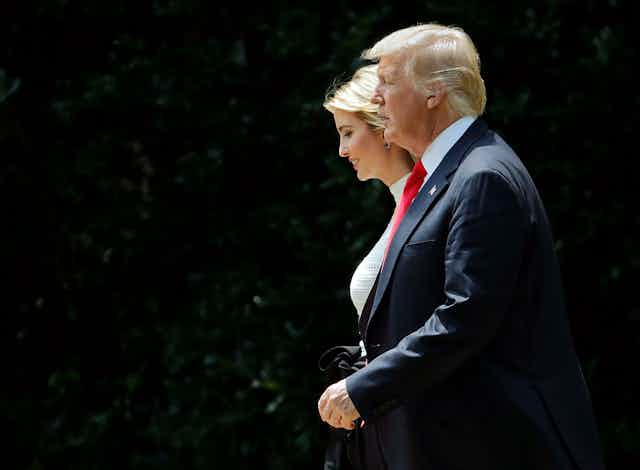The relationship between a high-profile figure and a business brand is fraught with difficulties, as the ascent of the controversial and contentious Donald Trump to the American presidency demonstrates every day.
Despite his political victory, Trump’s business brand, as well as Ivanka Trump’s, is suffering. The Trump Tower and properties in Toronto are ridding themselves of his name, and earlier this year, some retail giants pulled Ivanka Trump’s fashion label from their shelves. More recently, her fashion line is facing increasing scrutiny.
How is a personal brand related to a business brand? And what should be the optimal distance between the two?
My research findings suggest that we should all first understand the benefits and liabilities of a person who dominates a brand’s presence such as Trump, Omnimedia’s Martha Stewart, Virgin’s Sir Richard Branson or Apple’s Steve Jobs.
The person is dynamic, nuanced, with his or her own set of values, competence levels and vision. At the initial stage of the business brand-building, a person, particularly a charismatic founder with unique qualities, can represent an excellent shortcut to the construction of a business brand. Consequently, the business brand is not just a name or a logo. It is personified or exemplified by an intriguing, charismatic, successful and often idiosyncratic leader.
Nonetheless, the benefits of having a high-profile leader generally cease when the business grows and starts scaling. When a business brand has garnered substantial public attention and dominant market share, it gradually and necessarily evolves into an entity independent of its founder and leader.
People make mistakes that can hurt the brand
The corporation’s performance is mostly driven by teams and employees. Its major stakeholders are not just the brand’s leader and founder, but investors and the public. And at that point, a personality closely associated with the brand can become a liability, because human beings are fallible. They are susceptible to scandal (Martha Stewart), they pass away (Jobs) or they become widely disliked or distrusted in the face of controversy (the Trumps).

The negative spillover resulting from a personal brand’s scandal or crisis onto the business brand is not only costly and potentially disastrous for the business, but also requires the business to manage and control the fallout.
But how?
Based on my brand coaching experience over the past decade, I’d advise a business brand at the growth stage to cut the cord from the founder’s brand and enter the phase of depersonalization. The trick is not to “kill” or deteriorate the personal brand but instead, to make that person immortal by propagating their legacy, values, achievements and caveats of their stories, and morphing that person into a symbolic meaning.
In this new world, the person in that case ceases to be a dominating force or a risky spectre hovering over the business. The person has become the rooting foundation of a business brand and its source of meaning. A person’s visions, missions, thinking and responsibilities, when shared and enacted by the teams and employees, will become the soul of a business brand — and a source of inspiration, not embarrassment of the type that is plaguing the Trump brand.

